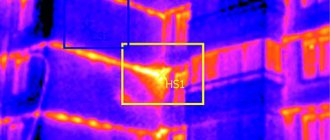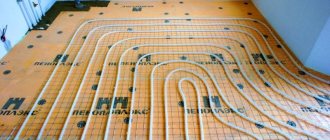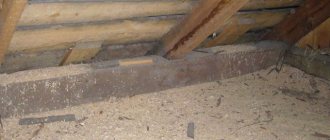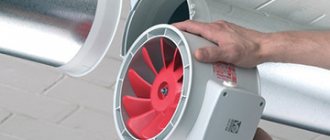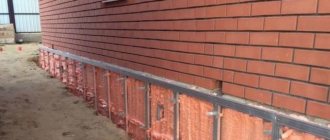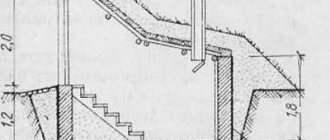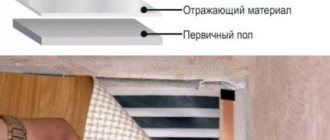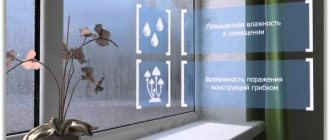Seal the cracks in the windows
First you need to stop all heat loss.
Wooden frames made from timber dry out and become deformed over time, forming cracks. If it is not possible to replace windows, it is worth insulating the old frames before the onset of cold weather. Large cracks can be neutralized with foam rubber by laying strips between the sashes, window sill, walls and sealing them with masking tape. A self-adhesive window seal is also suitable: it must be fixed to clean and dry frames.
Heat can also escape through micro-slits at the junction of the glass and the frame. To get rid of them, wash the window and degrease the corners, then apply window sealant, squeezing it out with equal pressure.
DIY insulation instructions
Due to the variety of thermal insulation materials, you can choose any of those on the market to insulate your room.
When purchasing, consider not only your financial capabilities, but also the requirements for the quality of the purchased material. It would be a good idea to ask the seller about the accompanying documents and the insulation quality certificate
Let us consider in detail the most popular options for internal thermal insulation of a room.
Method #1 - mineral or glass wool
To lay the material, you will need to make a frame from profiles and prepare sheets of drywall in advance for the purpose of subsequently closing the structure.
It is better to buy moisture- and fire-resistant plasterboard sheets - they will additionally protect the insulated wall from the penetration of dampness from the outside.
Step-by-step instructions for laying thermal insulation material:
- Install the profile along the entire perimeter of the wall, along the ceiling, walls, floor, and also make partitions between them in increments of 30-40 cm.
- Place mineral wool or glass wool in the prepared cells, leaving no empty spaces.
- Cover the structure with thermal insulation tightly with a vapor barrier film, make an overlap of 20-30 cm on the floor, ceiling, and adjacent wall.
- Seal the vapor barrier material to the floor and wall using double-sided tape.
- Cut the sheets of drywall with a construction knife into pieces of the required sizes.
- Install them using a screwdriver.
- Remove excess vapor barrier with a knife.
- Treat joints, cracks and holes with self-tapping screws with finishing or acrylic putty.
- After drying, level the surface with putty.
- Wait until it dries completely, then sand the wall with a fine mesh.
After completing the entire procedure, prime the surface and after a few hours it will be ready for finishing with decorating materials.
To perform the work, use a material with a high energy saving rate and a thermal conductivity of about 0.030 W/(m*°C). The properties of mineral wool are indicated on the outer packaging
This mineral wool has improved insulating properties compared to other similar materials. It can also be used to soundproof the ceiling.
Method #2 - PSB-S foam
A universal and most popular type of insulation, which is widely used in construction due to its low cost and decent heat saving performance. Choose high-density material with a width of 35-50 mm or more.
Polystyrene foam can be laid in several ways: in a pre-prepared wooden frame, from a metal profile followed by plaster covering, or by gluing it to the wall surface
If you wish, you can decorate the walls with tiles, wood panels, paint or use another option
The frame method is carried out according to a similar scheme as when insulating with mineral wool. Let's look at the method of gluing to a plane in more detail.
Follow this order of work:
- Apply an antifungal primer to the walls that you plan to insulate to prevent the subsequent formation of mold.
- Wait until the surface is completely dry.
- Install a waterproofing layer - this will provide additional moisture protection.
- Mix the adhesive solution in a bucket or other container by hand or using a drill and a whisk attachment.
- Start attaching the sheets from the bottom left corner and lay them in a checkerboard pattern.
- Measure the width and length of the plate required to fit on the wall and carefully cut a piece.
- Glue the prepared part of the material using the prepared mixture.
- After completing the entire procedure, leave the wall to dry for 1-2 days.
- If desired, you can additionally secure the foam with umbrella dowels: drill 5-6 holes in the insulation along the edges and in the middle, then drive in the dowels and plastic nails.
- Seal wide joints with polyurethane foam that does not contain substances that can damage the material - read the instructions. It is enough to cover narrow cracks with an adhesive mixture.
- The final stage is the installation of the reinforcing mesh by applying an adhesive or putty base to the surface, which will make the structure more reliable.
- After drying, level the surface with finishing putty.
Before wallpapering walls, be sure to apply a primer to the surface.
In addition to the presented methods of laying insulation, you can perform thermal insulation using other materials.
If you have a loggia, it is also advisable to insulate it. We provided guidance on how to independently insulate a loggia in the following article.
Put down the carpet
Textiles do not warm the apartment in a global sense, but they add coziness and comfort. Carpets on the floor reduce heat loss - this is especially important for residents of the first floors or owners of apartments above an unheated room. The thicker the pile, the warmer the house, but even ordinary paths, laid including in the kitchen, can help.
A carpet is an excellent way to insulate not only the floor, but also the wall, especially if it isolates the room from a cold entrance.
Improve batteries
If the temperature of the riser and the surface of the heating radiator differs, it is most likely faulty or in need of repair. Don’t forget to check the batteries before the heating season: a specialist will determine how worn they are and whether service or replacement is required. It will also help to remove old paint, each new layer of which reduces heat transfer.
To avoid unnecessary heating of the wall behind the radiator, place a screen of aluminum foil behind it - the so-called “heat trap”. Owners of such screens note that the effect is felt immediately after installation - the foil reflects heat and directs it inside the room.
Other ways to insulate an apartment
By dealing with the main enemies of heat in your home - cracks in windows and doors, you will raise the temperature in your apartment by 3-5 degrees. Most experts speak about such indicators. This will make living in your apartment more comfortable, and will also help you save money on expenses for housing and utility services.
However, of course, these are not all ways to make your home warmer. There are more radical methods of home insulation associated with large-scale repair work: installing a “warm floor” system; replacing windows and radiators in an apartment and others, and more simple ones: from rearranging furniture and laying carpets on the floor to installing a foil screen behind the radiators.
Those who are planning to purchase an apartment in a new building should first evaluate the quality of the renovation from the developer. The comfort of future residents will depend on how conscientiously the repair work is carried out. Some will have to think about insulating their apartment in the first winter after moving, while others will live in warmth and comfort for many years, without wasting time, money and effort on additional measures to improve the comfort in their home.
Today, many Russian developers rent out apartments with an increased level of thermal resistance. According to experts, technology makes it possible in 2021 to build houses that retain heat on average 13-15% better than those built 10 years ago.
The best option in which an apartment in a new building will be protected from the cold is a set of solutions to increase the thermal efficiency of housing.
It can be presented in the form of a formula: load-bearing layer of the building with thermal insulation properties + increased thickness of the facade insulation (1.5 times more than the norm) + high-quality finishing materials + modern heating system + multi-level protection against cold penetration into the entrances. We have already built more than 300,000 m2 of housing using this technology, where more than 10,000 happy Tyumen residents live. As practice has shown, the thermal efficiency formula works perfectly, not a single frost has occurred in 7 years of building houses.
You can personally evaluate the thermal insulation qualities of our apartments by visiting the construction site. Sign up by phone. Our specialists will meet and accompany you, and answer all your questions.
Live comfortably and don't freeze!
Hang blackout curtains
Thick fabric will help partially block drafts that arise in the room due to cracks and cold from the walls. The best option is thick curtains that need to be curtained after sunset. To avoid blocking the heat from radiators, draw the curtains behind them.
If the windows face the sunny side, clear the windows as much as possible from tulle and curtains to warm up the apartment during the day.
Combine several methods of insulating an apartment at once to make the microclimate more comfortable.
How to insulate an apartment from the inside - step-by-step instructions
It is better to postpone the process of insulating an apartment until the summer, as it is quite labor-intensive and time-consuming.
- To begin with, absolutely everything is taken out of the room in which work is planned. Then the heating is turned off and the radiators are removed. If you replace them, we advise you to follow the following rule: the distance between the battery and the wall should not be more than 2 cm, and with the floor and window sill the battery should hang at a distance of 15 cm.
A new radiator is hung on the fixed brackets and connected to the pipes. A Mayevsky valve or other air valve is installed in the upper part of the radiator.
- The next stage is insulation of the wall panels. The room is measured and the required amount of material is calculated. The walls are treated with an antiseptic and sheathed with a profile. The structures are attached from the wall at a distance of 3 cm. Between them and the wall, for example, mineral wool is laid. The front part of the structure is sheathed with sheets of plasterboard - it is attached to the installed profiles.
- We insulate the windows. When do you need to insulate windows and how to do it? If the windows are blown out and frozen, it is best to replace them with new ones. If this is not possible, you should contact any service center and invite specialists who can assess the problem and offer a solution.
If this option is also not suitable, take up the matter yourself. Start by replacing the rubber seal, because if it is weakened or damaged, cold will definitely enter the apartment. The old rubber should be removed from the frame and a new one should be installed in its place. Next, carefully inspect the slopes and window sill for damage and cracks. The slopes are insulated with tow. The voids under the windowsill are also a source of cold penetration. They are filled with polyurethane foam and reinforced with a plastic board.
A film with a heat-saving effect can be glued over the glass.
If the window frames are wooden, they are protected from air penetration by sealing and plugging the cracks. For these purposes, foam rubber, paper, cotton wool, and tape are used.
How and with what should I treat the seams to prevent blowing?
To stop the wind from blowing around the apartment, you need to additionally treat the seams. Sealant, polyurethane foam, silicone glue, and foam rubber are suitable for this.
